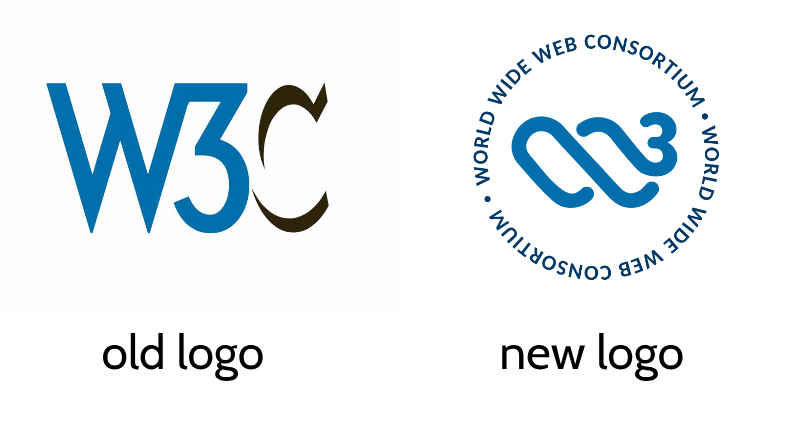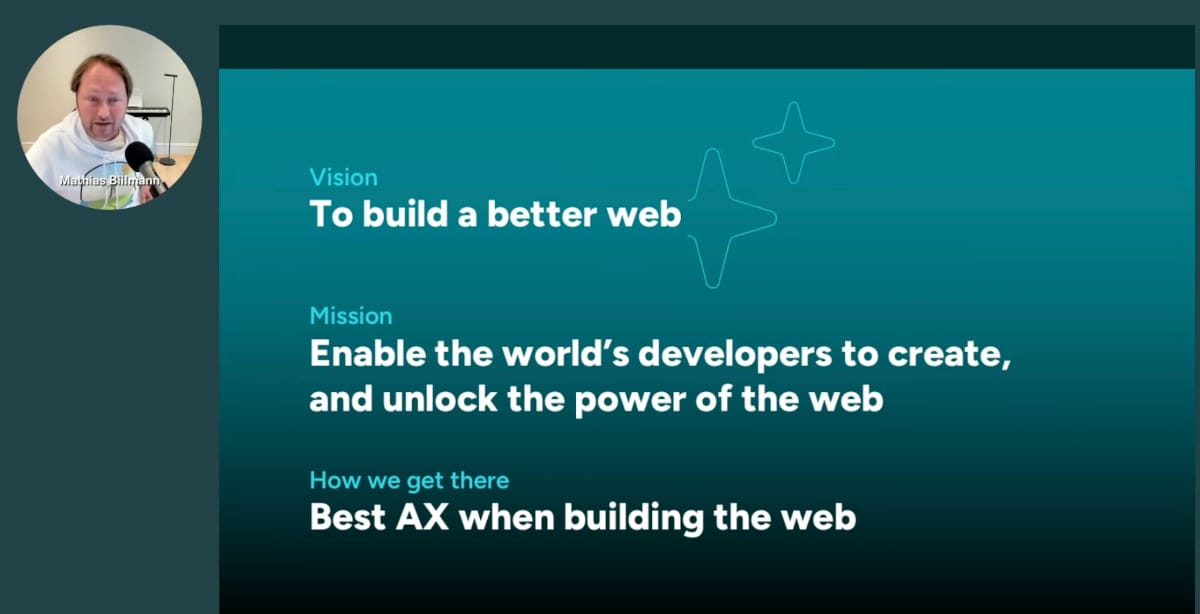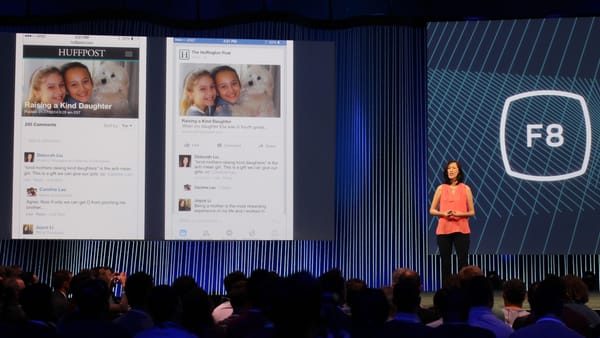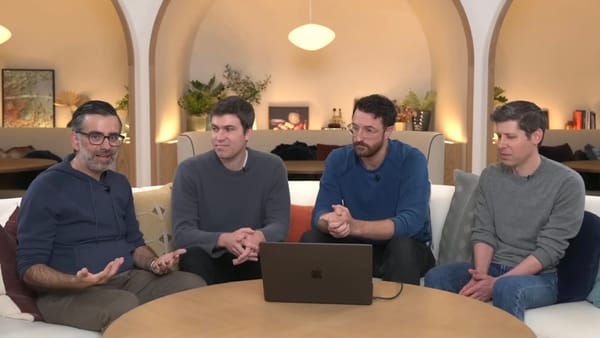New W3C Design, WebMCP, and Newsletter Improvements

I have lots of chunky web tech news for you this week, but first a quick note on a few changes around here. I want to make this newsletter more appealing to business people on the web (including techies!), so the site's description is now:
"Web Technology News (WTN) is your weekly briefing on the Web’s future: infrastructure, open networks, and AI"
My goal is to make this newsletter truly useful for web professionals — developers, entrepreneurs, investors, anyone whose livelihood depends on a healthy web ecosystem. Accordingly, I've added a "WTN Note" to many of the news items, so that this becomes more of a business and strategy briefing than just a list of interesting links.
Finally, the three categories have changed to reflect what I aim to offer you:
- Web Platform Opportunities
- Open Social Business
- AI x Web: Emerging Strategies
Let me know if you have any feedback! Ok, onto the good stuff...
Web Platform Opportunities
🌐 The W3C unveiled a new logo and tagline for its 31st anniversary. The tagline goes from ‘leading the web to its full potential’ to ‘making the web work — for everyone’. Special shoutout to W3C's Coralie Mercier, who told me on Mastodon that she coined the new tagline, back in 2019.
WTN Note: “Making the web work — for everyone” is a shift from visionary to pragmatic language. It reflects how standards bodies now need to show concrete, inclusive outcomes rather than lofty potential. I also like that the "for everyone" bit a) harkens back to Tim Berners-Lee's original vision for a "world wide" web, and b) nicely complements his new memoir ('This is For Everyone').

🌐 John Allsopp convincingly argues that we're in a transition period of web development, and that AI can help guide us to a less complex frontend world:
"The current front-end stack evolved and became increasingly complex and complicated to solve human challenges when developing for the web platform. AI changes the nature of those challenges fundamentally."
WTN Note: AI coding tools were largely trained on frameworks like React and Next.js, at least for frontend code, but developers don’t have to stay locked into that legacy. By being prescriptive with prompts, you can steer LLMs toward a simpler, standards-based approach — a trend that is likely to become the norm in AI-assisted development.
🌐 Brave browser has announced it has over 100 million monthly active users. Founder and CEO Brendan Eich is emphasizing the "privacy-by-default" features in the browser. Brave also has an indie search engine, which it touts as "one of only three truly independent search engines in the western world, and the only one outside Big Tech." It's the default search engine for most Brave users, says the company.
WTN Note: Vivaldi is another privacy-focused browser ("Privacy isn’t just a feature at Vivaldi, it’s a philosophy.") and it gets a lot of buzz on Mastodon. Mozilla's Firefox also emphasizes privacy ("Privacy isn’t just a setting — it’s your right."), so among the leading non-bigtech browsers, it's clear what the top priority is! For businesses, this shows a widening gap in user trust between Big Tech browsers and indie competitors — and an opportunity for startups to build privacy-first services that align with this trend.
🌐 Brian Kardell, a developer advocate at Igalia, has listed out things on the web platform that he thinks are under-invested in. One thing that stood out to me was his comments on testing infrastructure:
"The amount of things that we are incapable of actually testing is way higher than we should be comfortable with. The web actually spent the first 15 years or so of its life without any actual shared testing like web platform tests. Today, lots and lots of that infrastructure is just Google provided, so not community owned or anything."
🌐 Speaking of testing infrastructure, Mary Branscombe posted an in-depth story on The New Stack this week about how the Web Platform Tests (WPT) process actually works. I was the editor for this piece, and just before publication Mary emailed me a wonderful comparison: "Think of WPT as the engine for interoperability on the web."
🌐 404 Media reports that Apple has removed ICEBlock, an app that lets people crowdsource sightings of ICE officials, from its App Store.
WTN Note: This wouldn't have happened if ICEBlock was a web app (a Progressive Web App — PWA), because of course the web has no App Store overlord. The takeaway: developers and businesses should consider PWAs when regulatory or political risks could lead to deplatforming on app stores. (hat-tip Alex Russell, one of the inventors of PWAs, who was incensed that "the tech press" failed to mention the web app alternative).
Open Social Business
🦋 Bluesky released "a patent non-aggression pledge to ensure that everyone can build confidently on our work."
WTN Note: While the pledge may not materially change day-to-day dev work, it signals Bluesky’s attempt to position itself as a safe ecosystem for commercial builders. But the real friction point remains moderation policy, which continues to affect Bluesky and may impact mainstream adoption and brand safety.
🦣 Newsmast, a nonprofit media organization on the fediverse, announced it is "going all-in on apps." They will be creating white-label apps for other orgs.
WTN Note: By offering white-label apps, Newsmast is betting organizations want turnkey fediverse presence. If they emphasize open web apps over iOS/Android, this could become a viable B2B model for nonprofits and media groups seeking independence from app stores.
🦣 WordPress adds the ability to view fediverse accounts in the WordPress.com Reader, available in the .com service and also in the Jetpack plugin on self-hosted accounts.
WTN Note: WordPress’s move is significant because it normalizes fediverse identity for millions of sites. For businesses, this is a signal that decentralized identity and social graph integration could soon be a standard expectation in CMS platforms.
🦋 Dan Abramov explains what we're all building towards:
"Open social frees the web we’re creating from somebody else’s boxes. Our profiles, likes, follows, recipes, scrobbles, and other content meaningfully belong to us."
🤮 Now this isn't open social news, but it's worth noting OpenAI's launch of an horrendous-looking social media app called Sora (version 2 was released this week — invite-only, iOS-only), that enables users to create and consume AI-generated videos. Sigh. Sam Clemente summed it up best with his comment on Mastodon:
"Okay so with all that's going on around social media these days OpenAI decides the action they're going to take is...to make AI TikTok?
That sounds like a great idea. Truly the best. 🫠"
AI x Web: Emerging Strategies
🤖 WebMCP is a new standard from Microsoft and Google that lets devs control how AI agents interact with websites using client-side JavaScript. I interviewed Kyle Pflug, group product manager for the web platform at Microsoft Edge, for this article on The New Stack.
WTN Note: It’s early days, but if MCP/WebMCP gains traction, businesses may need to design for agent compatibility the same way they currently design for SEO or APIs. As I've noted previously, I think it's great that web technology has become the foundation for internet/agent interactions.
🤖 OpenAI announces "agentic commerce in ChatGPT" with Instant Checkout and the Agentic Commerce Protocol (ACP). It's a collab with Stripe, Etsy and Shopify.
WTN Note: OpenAI’s new protocol, ACP, underscores the power imbalance: one vendor is effectively setting commerce standards for agents, even when prior art exists (see my TNS profile of Shopify's MCP implementation). For businesses, this means monitoring not just technical protocols but platform politics, as OpenAI consolidates influence over online transactions.
🤖 Netlify launches Agent Runners, which enables Netlify users to run AI coding tools from the Netlify Dashboard. The company held a 1-hour online launch this week, also announcing AI Gateway ("Use popular AI models in your code, without needing to manage API keys or external accounts").
WTN Note: In introducing the new tools, Netlify CEO Matt Biilmann also boasted about a huge rise in users on Netlify's platform, which he attributed to non-developers now being able to create apps using AI tools. So it totally makes sense for Netlify to have a dashboard with various AI tools to encourage more of this. It was also good to see that the web remains front and center at Netlify — see Biilmann's introductory slide below — even if "AX" (Agent Experience) has replaced DX (Developer Experience) as the new mantra.

🤖 Wikidata Embedding Project launched on Wednesday: "By leveraging advanced machine learning models and scalable vector databases, the project seeks to support the open-source community in developing innovative AI applications" (via TechCrunch)
WTN Note: Wikidata embeddings could make open source knowledge bases more competitive with proprietary AI stacks. For businesses, it signals that open data remains a strategic asset in training and deploying models.
One More Thing
🎈 On Mastodon, a user called Hedders posted this amusing comparison of the various types of social media user:
"X is where you find the people who think they run the Internet.
Bluesky is where you find the people who think they ought to run the Internet.
Mastodon is where you find the people who actually do run the Internet, and kind of wish they didn't.
(WIth apologies to Yes, Minister)"
In the comments, JonChevreau added:
"@hedders And Threads is for people who want the Internet to run THEM"
If we can't laugh amongst ourselves...
Thanks for reading Web Technology News (WTN), my weekly newsletter tracking what's next on the web. I'm still in the early phase of this project, so please share the newsletter on your favorite social media platform — I'd love to eventually make this into a thriving community of webheads.
You can get the full content of WTN via email (the form is on the WTN homepage) or RSS. A benefit of signing up via email is that it allows you to post comments on the URL where this post lives: i.e. on the Web.
You can also follow WTN on social media: search "@feed@webtechnology.news" on Mastodon or click here to follow on Bluesky.
Until next week, keep on blogging!



